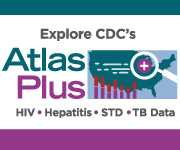Surveillance Overview
Surveillance is the ongoing, systematic collection, analysis, interpretation, and dissemination of data regarding a health-related event. HIV surveillance collects, analyzes, and disseminates information about new and existing cases of HIV infection (including AIDS).
CDC’S National HIV Surveillance System is the primary source for monitoring HIV trends in the United States. CDC funds and assists state and local health departments to collect the information. Health departments report de-identified data to CDC so that information from around the country can be analyzed to determine who is being affected and why. For details on confidentiality of surveillance data, see Data Security and Confidentiality Guidelines for HIV, Viral Hepatitis, Sexually Transmitted Disease, and Tuberculosis Programs: Standards to Facilitate Sharing and Use of Surveillance Data for Public Health Action.
The ultimate surveillance goal is a nationwide system that combines information on HIV infection, disease progression, and behaviors and characteristics of people at high risk. By meeting this goal, CDC can direct HIV prevention funding to where it is needed the most.
Tracking AIDS Trends
During the 1980s, AIDS cases alone provided an adequate picture of HIV trends because the time between infection with HIV and progression to AIDS was predictable. This predictability, however, has diminished since 1996, when highly active antiretroviral therapy (HAART) became available. Access, adherence, and response to HAART affect whether or when HIV progresses to AIDS. Thus, trends in AIDS cases alone no longer accurately reflect trends in HIV infection. AIDS trends do, however, continue to provide important information about where care and treatment resources are most needed.
Tracking HIV Trends
By April 2008, all states had implemented a confidential name-based system for reporting HIV diagnoses to CDC. Tracking HIV trends is challenging and depends on several factors, such as how often people are tested, when during the course of their infection they are tested, whether and how test results are reported to health departments, and how case reports (with personal identifiers removed) are shared with CDC.
A major advance has been the development of the serologic testing algorithm for recent HIV seroconversion (STARHS). STARHS is a way of analyzing HIV-positive blood samples to determine whether an HIV infection is recent or has been ongoing. CDC currently funds 25 areas to conduct HIV incidence surveillance activities.
Today, monitoring trends in HIV infection requires the collection of information on diagnosed cases of HIV, including the ongoing collection of laboratory data for each person diagnosed, to monitor the stages of the disease (including progression to AIDS [stage 3 HIV infection]), linkage to and retention in HIV medical care, and HIV-related outcomes such as viral suppression, death, and survival. All 50 states, the District of Columbia, and 6 U.S. dependent areas use a uniform confidential name-based HIV infection reporting system for collecting data on HIV infection.
Monitoring HIV Risk Behavior
Behaviors are monitored with regard to risk taking, HIV testing, care seeking, and adhering to treatment for HIV in different populations.
Several federally supported surveys collect information about HIV-related behaviors of the general population. They are conducted periodically so that trends can be evaluated. Some examples are:
- MMP (Medical Monitoring Project) is a supplemental surveillance system designed to collect information from patients with HIV who received care from randomly selected HIV care providers.
- NHBS (National HIV Behavioral Surveillance System), for populations at high risk, began in 2003. NHBS conducts surveys in cities with high levels of AIDS among MSM, IDUs, and heterosexuals at high risk to determine their risk behavior, testing behavior, and use of prevention services.
Monitoring HIV Counseling and Testing Behavior
National HIV Prevention Program Monitoring and Evaluation (NHM&E). CDC has funded HIV testing at health care and non-health care sites since 1985. Staff at these sites collect information about the persons tested (e.g., demographic information, behavioral risk factors), current and prior test results, receipt of test results, and referrals. Information about clients is collected by a service provider for each HIV testing episode, sent to an appropriate health department, and then assessed for completeness and accuracy. This information is then reported by the appropriate health department to CDC on a regular basis. NHM&E testing data have been used at the national and local levels for HIV prevention policy, program decision-making, program monitoring, evaluation activities, research, presentations, and reports.
- Page last reviewed: January 31, 2017
- Page last updated: January 31, 2017
- Content source: Division of HIV/AIDS Prevention, National Center for HIV/AIDS, Viral Hepatitis, STD, and TB Prevention, Centers for Disease Control and Prevention


 ShareCompartir
ShareCompartir
